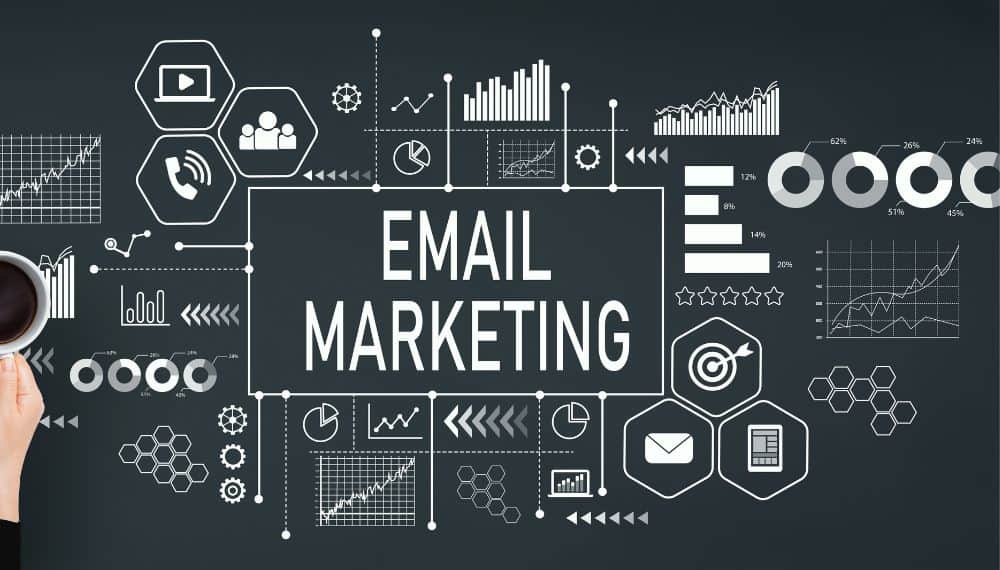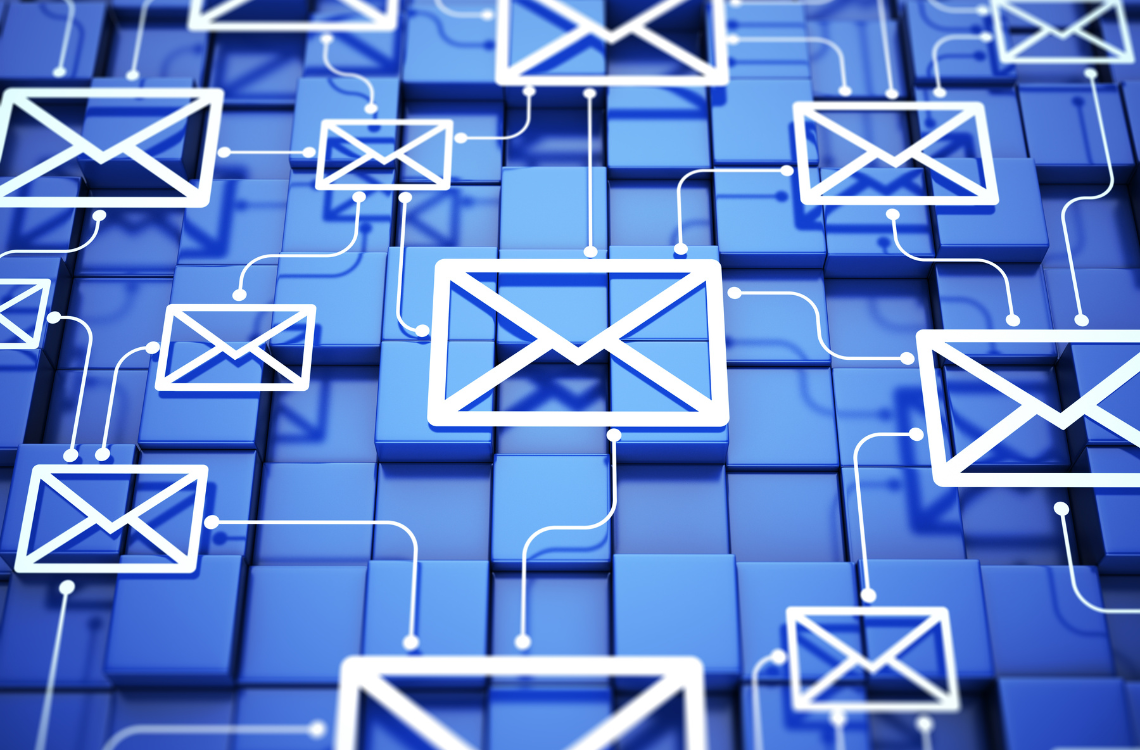- 11th Sep, 2023
- No Comments
The Ultimate Guide to Email Marketing Automation

For a long time, Email Marketing has been an integral part of online marketing strategies. Indeed, it is a powerful way to grab your audience’s attention and target them in your sales funnel.
However, not all email marketing campaigns are built equal. Different strategies yield different kinds of results. Some work, and on the other hand, some fail.
With millions of emails sent worldwide daily, it is hard to imagine that each one of them is opened and read word by word. And, with promotion tags already being embedded in emails, things become more obsolete.
This shows that the effort is more as compared to results in email marketing. But is there a way to decrease this effort somehow?
Well, email marketing automation might help!
Using email automation can help you deploy your campaigns in no time and will allow you to send more and more emails based on customer behavior faster than ever before.
Whether it is about a welcome email, reminder emails, cart abandonment, or even a cold pitch, with email marketing automation at your disposal, your efforts will be reduced, and results will soar.
So, let’s find out how you can leverage email automation to increase the engagement of your brand and boost sales.
What Exactly is Email Marketing Automation?

It is a game-changing strategy that is implemented in email marketing campaigns so as to increase the effectiveness and return on investment of the campaigns.
Various advanced technologies and predefined workflows are involved in email marketing automation that automates various elements of the whole email marketing campaign.
In turn, marketers are able to deliver highly personalized and targeted content to their target audience, thus increasing the chances of more sales conversions.
The traditional email marketing approach follows creating emails manually and sending them individually based on user preferences (if personalization is in the strategy), which makes it a time-consuming and laborious process.
However, with automation at our disposal, email can be crafted faster than ever, and that too at a personalized level, and can be deployed in a matter of clicks.
Email automation does not affect user experience rather, it enhances efficiency, delivers a more captivating message, and maintains relevancy throughout the campaign.
The perfect message is delivered to the right person at the most opportune moment, making email marketing automation an advanced tactic as compared to the traditional approach, which is a generic one.
Automation segments the target audiences based on factors such as their interests, buying behavior, age demographics, and past interactions with your site or online product.
Based on this information, tailored content is curated that, when delivered to respective users, resonates with them, engages them, and ultimately converts them into a customer.
What are the Benefits of Email Marketing Automation?

1. It Enhances Personalization and Allows More Defined Segmentation
Personalized and precisely targeted campaigns are one of the USPs of email marketing automation. What makes personalization driven by automation a possibility is the tailored content that is deployed.
With the defined segmentation of the audience along with their behavior, interests, and preferences already analyzed, the content deployed perfectly aligns with them and allows higher email open rates, click-through rates, and, ultimately, conversions.
2. Automation Improves Customer Engagement
Customer engagement depends on the relevance of the content that is sent and the timing at which it is sent. Email automation is good at doing both, thus engaging the audience effortlessly.
Whether it is a welcome email, birthday greetings, discount sales offer, or even a cold pitch, with automation, there are higher chances that your emails will get opened and read through more often.
3. Time and Resource Efficiency Increases With Automation
Sending emails manually one after the other and writing them in a unique way for each recipient is time-consuming and takes a lot of effort.
With automation, you can streamline this process by putting the recipients in an identical list, segmenting them, and then automating the whole email creation and sending workflow.
The increased efficiency that you will find after automating small processes within an email campaign will allow you to enhance your creativity and craft more compelling content for a higher customer conversion rate.
4. It Fosters Real-time Triggers and Instant Responses
Automation allows things to happen even if you are not sitting in front of your computer screen, thus keeping the workflow moving without any pause.
For instance, a customer purchases a product from your website, and a “Thank You” email needs to be sent for the same. To get that done, you don’t have to jump in and manually do that because automation can do it by real-time trigger responses and instant responses to such activities.
Whether it is about reminding a customer to renew their subscription or abandoning their online shopping carts, automation makes it easy with its level of immediacy and keeps your brand always in the customers’ minds.
5. Automation Provides Data-driven Insights and Analytics
When it comes to data-driven insights and analytics that can be leveraged to enhance the success of an email campaign, automation has a knack for it.
Email opening rates, click-through rates, number of leads generated, and conversion rates are some of the many metrics that automation can look into and provide data and analytics of.
Who Benefits Most from Email Marketing Automation?

There are many individuals and businesses that can benefit from automated email marketing. Some of them are:
1. E-commerce Businesses
Online storefronts and e-commerce businesses can use personalized product recommendations, order updates, and card abandonment reminders via sending automated emails to their existing customers and prospective customers, thus boosting sales and engagement.
2. B2B Companies
B2B businesses always look for lead nurturing that needs to send targeted content to specific businesses. With automated emails, this process can be effortlessly executed, thus streamlining the whole process, whether it is following up or pitching new services.
3. Content Publishers
With automation, content publishers have the power to send personalized newsletters, blog updates, and promotional offers to their subscribers in just a matter of seconds, thus driving traffic to their sites and attracting new users too.
4. Startups and Small Businesses
Automated email campaigns level the field as they enable startups and new small businesses to use limited resources to land something big. Whether it is about finding new customers or delivering personalized experiences to existing ones, automated emails are the way to go.
Key Features of Email Marketing Automation Platforms

Email marketing automation platforms offer a plethora of features and tools that empower marketers to craft, manage, and optimize their automated email campaigns.
1. They Allow Knowing the Audience
It is essential to know the audience whom you are going to target in an email marketing campaign. Their preferences, buying behaviors, engagement patterns, and history of purchases with your brand are the things to look out for, which email automation platforms do well.
Invaluable data and analytics are extracted by these platforms about the subscribers and potential customers, allowing marketers to take action based on these insights.
Sending highly personalized and pertinent content to target users is made easy due to the segmentation abilities these platforms bring to the table. This segmentation further allows the precise deployment of email content to relevant users and increases engagement and conversions.
2. They Devise The Whole Email Marketing Strategy
A well-defined email marketing strategy is what is required to move the needle of conversions and revenue generation. However, it is not that easy, given how tedious it is to execute the little things involved in a campaign.
But if the strategy is built around automation, it has the ability to devise the campaign as a whole, be it lead generation, nurturing existing customers, or re-engaging with inactive subscribers.
Automation can map out a customer’s journey and identify touch points where automated emails can be triggered to target them based on the actions they take at a certain time of events. This, in turn, creates a defined workflow that ensures that relevant emails are sent to the customers timely.
Types of Email Marketing Automation Campaigns

Email marketing automation platforms cater to a variety of campaign types, addressing different stages of the customer lifecycle, which might include:
1. Welcome Series
These automated emails greet new subscribers, introduce your brand, and set expectations for what they can anticipate from your emails.
2. Abandoned Cart Reminders
Target customers who leave items in their shopping carts without completing the purchase are enticed by abandoned cart reminders, thus asking them to return and finalize the transaction.
3. Drip Campaigns
These campaigns deliver a series of emails over a predefined period to nurture leads and cultivate relationships with your audience.
4. Re-engagement Campaigns
Aimed at inactive subscribers, re-engagement campaigns look to reignite their interest and encourage them to become active again on the brand’s website and engage with their new products.
5. Advancing Your Email Marketing Automation Strategies
As proficiency is gained with automated email marketing, these advanced strategies can take things to another level:
6. Behavioral Triggers
Set up automation based on specific actions or behaviors, such as clicks, downloads, or website visits, to deliver highly personalized and timely content.
7. Dynamic Content
Tailor the content of your emails dynamically based on subscriber data, ensuring that each recipient receives a unique and relevant message.
8. Lead Scoring and Nurturing
Assign scores to leads based on their interactions and engagement levels, and then use this data to send targeted emails and prioritize follow-ups.
9. A/B Testing
Continuously test different elements of your email campaigns, such as subject lines, call-to-action buttons, or send times, to optimize performance and achieve better results.
Setting Up Email Marketing Automation Effortlessly
Once the final decision has been made from your side to use email marketing automation on a full scale in your campaigns, it’s time to craft email content and set up the campaigns effortlessly.
To make that happen, here are some invaluable tips:
1. Understand the Target Audience Inside Out
The secret sauce to deploying a successful email campaign is to completely understand the audience whom you’re targeting. This understanding can be based on their behavior, preferences, and demographics.
Further, grouping these audiences based on these categories can help you create content that would perfectly align with them and resonate with their individual needs and interests.
2. Craft Irresistible Email Subject Lines
The first thing that a prospective customer sees is the subject line of the email you’ve sent to them. Is it captivating enough to force them to open the entire email? Well, if it is not, then it might never be opened and end in the trash bin to be deleted permanently after 30 days.
To create captivating email subject lines, write concise, relevant, intriguing content, urging the recipients to click within the split-second they read it. There is no need to use clickbait wording, excessive caps, or exclamation marks. Keep it straight to the point and punchy.
3. Focus on Personalized Content
When using automation, it is better to cling to personalized emails. It can be done by inserting subscriber names, locations, or other pertinent details, thus adding a personal touch that will make the recipients feel more valued and foster a stronger bond between you and them.
Dynamic content is another way of making things more personalized, which can be done based on the recipient’s past interaction with your brand, their purchase history, and their unique interests.
4. Use Compelling Call-to-Action (CTA)
Emails without compelling CTAs do not work much as compared to the ones that have them. Whether you want your subscribers to make a purchase, download an eBook, sign up for a webinar, or follow your social media channels, the CTA should be prominently displayed and straightforward.
The use of action-oriented language creates a sense of urgency in customers, which forces them to do something and take action in the direction that you are showing them.
5. Optimize the Campaigns for Mobile Users
Most of the emails are opened on mobile devices, which makes it essential for email campaign creators to optimize the emails for mobile users.
Responsive design that adapts various screen sizes, short paragraphs, concise sentences, and easy-to-read fonts are some factors that can make a difference in optimizing email campaigns for mobile devices.
To further make things more polished, test the emails on various devices first and only deploy them to your customers if you’re satisfied.
Testing and Optimization in Email Marketing Automation
To achieve success in automated email marketing campaigns, testing and optimization are necessary as they identify what resonates best with your audience.
Based on this analysis, you can optimize your email campaigns and continually improve them to make your email marketing strategy a success.
1. A/B Testing (Split Testing)
Split testing or A/B testing is used in almost every type of online marketing channel, which makes it a powerful method to identify what works and what does not.
In automated email marketing campaigns, A/B testing is done by emailing two different versions of an email to a small segment of the audience. Typically, the variations are done in subject lines, the content of the email, or CTAs.
The email version that gets the most positive response is selected to be sent to a larger audience at a later stage.
2. Testing Automation Workflows
Automated workflows, when implemented, are needed to be tested and monitored at regular intervals. The triggers and instant responses must be looked into and made sure that they are functioning correctly so as to deliver emails as intended.
The emails’ content, timing, and frequency are something that must align with the objectives of the campaign. Paying close attention to these things allows prompt detection of potential issues and eradicating them as soon as possible so as to ensure a seamless user experience.
3. Email Design and Rendering
The engagement rates of emails are affected by the way they are represented on the screens of the users, whether mobile, desktop, or tablet.
For a consistent and visually appealing experience at the user’s end, test the layouts of email across different device platforms, including mobile devices, desktops, and other device types. Optimize the size of the images, go for a responsive design, and focus on the functionality of hyperlinks and buttons.
4. Timing and Frequency
Maximized email rates and click-through rates depend upon the timing at which you send the emails to the recipients. The only way to identify the best timing and frequency is to conduct tests by sending out emails at different times and at varying frequencies.
For some audience types, the ideal timing and frequency would be different, and for some, it would be different. Therefore, segmenting the audiences having the same timing and frequency preferences into similar groups would help in better email marketing automation.
5. Avoiding Common Automation Mistakes
Mistakes are bound to happen when it comes to automated email campaigns, but they can avoided if some of the following things are kept in mind:
6. Don’t Do Over-automation
Excessive automation must be avoided at all costs as it can lead to a decline in user experience and eventually disconnect you from them. Instead, the focus should only be on delivering valuable content at the right time and at the right frequency.
7. Don’t Neglect Personalization
Automation does not mean that you must robotize everything and neglect the human touch. With automation, the goal should be to enhance personalization by using user data and their buying behavior so as to create personalized and relevant content that resonates with the audience.
Final Thoughts
Online marketing campaigns are driven by successful communication, and email marketing does not fall shy of it either. Email marketing, being part of a billion-dollar online marketing industry, must achieve tangible outcomes so as to elevate customer engagement.
To fulfill that, email marketing automation is something that can help businesses optimize and run their campaigns in such a way that it fosters customer loyalty, propels revenue growth, and builds a brand with recurring customers.
For an effective and pertinent email marketing campaign, automation is necessary as it allows you to do things that take more time and effort. So, leverage the power of automation like you have never done in your life before. Remember to use a service that uses high-quality servers for email marketing.
